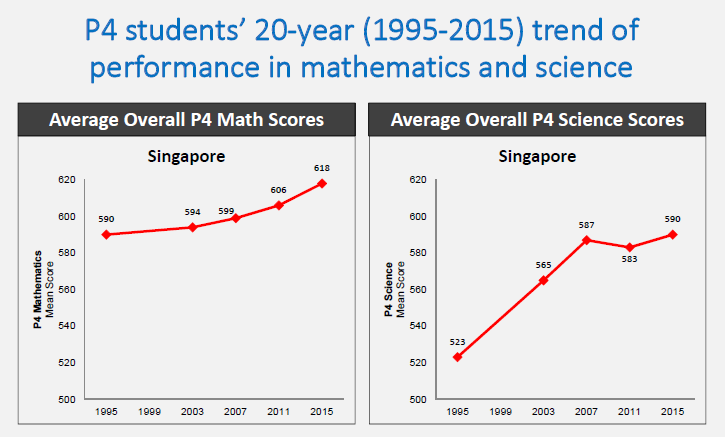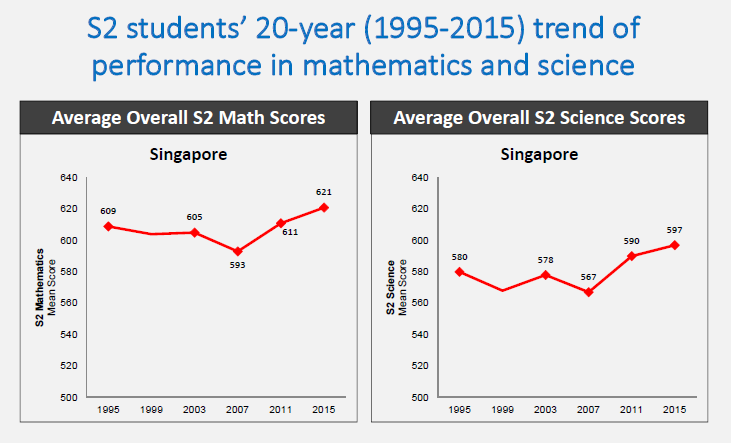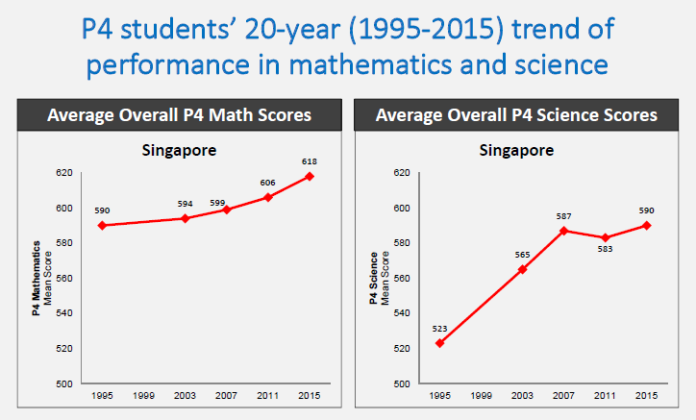SINGAPORE — Singapore students have once again proven their prowess in science and maths by topping the charts in one international benchmarking study released on Tuesday (Nov 29).
Not only are they scoring well in these subjects, but compared to their global peers, Singapore pupils also have more positive attitudes towards learning these subjects and say they enjoy them, putting paid to the Education Ministry’s (MOE) efforts to reduce content and allow students to learn in a more active way.
In the latest Trends in International Mathematics and Science Study (TIMSS), Primary Four and Secondary Two students in Singapore outperformed their peers from 63 other countries in both maths and science. The Republic’s students have consistently done well in the study conducted every four years here since 1995, although the last time Singapore topped all four charts was in 2003.
MOE said the latest results also affirmed a trend that students today are better able to apply knowledge and skills, and solve non-routine math and science problems.
Comparing 2015’s results with 1995’s, the Primary Four pupils’ average score of their ability to understand, apply and reason went up from 590 to 618 in math, and from 523 to 590 in science, while Secondary Two students’ score rose from 609 to 621 in math, and from 580 to 597 in science.


Coming in second and third for the Primary Four level are Hong Kong and South Korea in math, with their students scoring an average of 615 and 608 respectively, and South Korea and Japan in science, with 589 and 569 respectively. All scores are adjusted to a 500 scale average.
At the Secondary Two level, in math, South Korea and Chinese Taipei trail behind Singapore with average scores of 606 and 599. In science, Japan and Chinese Taipei take second and third place, with scores of 571 and 569.
The latest study involved about 6,500 randomly-selected Primary Four students and about 6,100 randomly-selected Secondary Two students across all Singapore schools. Altogether, more than 582,000 students, 250,000 parents and 51,000 teachers were roped in for the study internationally.
Syllabus changes, which saw two “massive rounds” of content reduction in 1998 and 2003, could have played a part in the improvements, said Ms Low Khah Gek, deputy director-general of education (schools).
“The reason for content reduction is really to free up time, so that our teachers can teach differently, our students… can learn in a more active way, and be given more space to actually investigate, explore, as well as talk in class,” she said.
While the study found very small proportions of students who are “low performers” in maths or science, Ms Low said that number is “consistently tracked” to “see how we can enhance our learning support in order to make sure that our students really meet the baseline competencies needed for math and science”.
The study also revealed that students here have positive attitudes towards learning the two subjects, with 85 per cent and 88 per cent of Primary Four students said they enjoy learning math and science respectively – both are 1 percentage point higher than the international average.
On the other hand, 92 per cent and 91 per cent of Secondary Two students say they value the learning of math and science respectively, compared with the international average of 87 per cent and 81 per cent.





